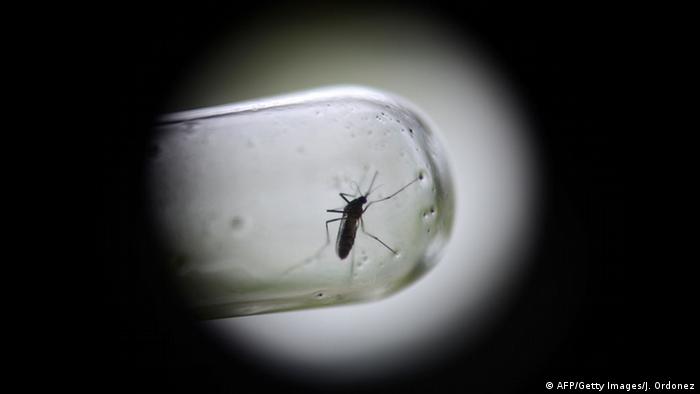What you need to know about yellow fever
Angola has been fighting an outbreak of yellow fever since December 2015. These are some of the most important facts you need to know about the virus.
Type of disease
Hemorrhagic fever
Pathogen (cause)
Yellow fever virus
Transmission
The virus is transmitted via infected yellow fever mosquitoes, also known as Egyptian tiger mosquitoes or Aedes aegypti - day and night.
Regions of risk
Tropical Africa, Central and South America
Rates of infection
There are about 200,000 cases of yellow fever per year, with 30,000 resulting in death. Ninety percent of cases occur in Africa.
Duty to report
Yes
Variations
A form of "jungle" yellow fever - commonly referred to as yellow fever - can be transmitted by mosquitoes between apes living in the wild, and also transmitted to humans.
In urban areas, the virus is also transmitted by mosquitoes between humans.
Incubation period
Three to six days after infection.
Symptoms and how they progress
Mild symptoms occur in 85 percent of cases. Patients experience a 40 degree fever, shivering, headaches, pain in the limbs and muscles, nausea and vomiting.
Severe symptoms occur in 15 percent of cases. There are two phases.
Phase one: vomiting bile, diarrhea, extreme thirst, mild jaundice, bleeding gums, low levels of urine.
Phase two: hemorrhaging of the skin and mucous membranes, acute liver failure, blood and fluid loss, acute kidney failure, failing detoxification, neurological symptoms. Death can occur on the sixth or seventh day due to multiple organ failure, with bleeding all over the body.
Death rate
Between 50 and 60 percent of patients presenting severe symptoms die.
Treatment
There is no specific treatment for yellow fever - only the symptoms can be treated.
Prevention
Vaccination and protection against mosquito bites.


No comments:
Post a Comment